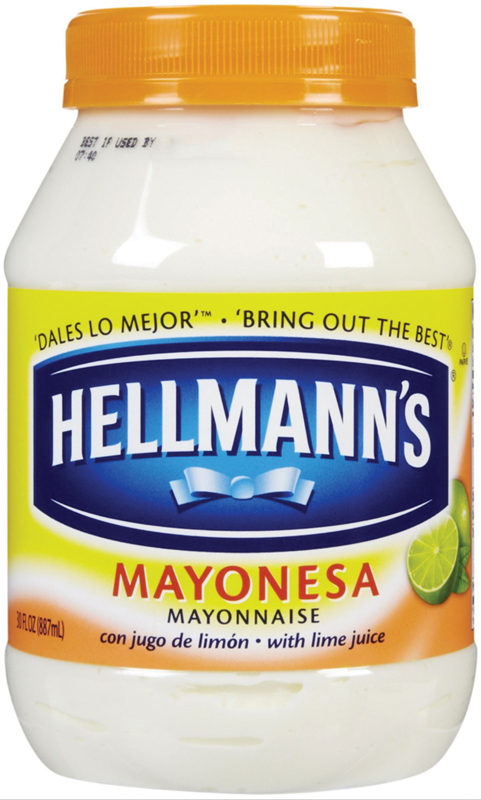Anyone asked to name a favorite condiment might quickly say ketchup or mustard, and sure—those are good. But here’s why mayonnaise is the real culinary star. (This article was originally published in Uncle John’s Weird Weird World EPIC.)
You Say Mahonnaise, I Say Aioli
Mayonnaise is the bedrock ingredient of numerous condiments and sauces worldwide (rouille, remoulade, tartar sauce, and Thousand Island dressing, for example). Mix a jar of ketchup with mayo and you’ve got Russian dressing. Mix mustard with mayo, and you’ve got Helleman’s Dijonnaise. The list just goes on and on. There is no definitive source for the origin of the word. Here are a few theories:
- It derives from the Old French word moyeu for the yolk of an egg, which is an essential ingredient.
- The French made mayonnaise from a popular Spanish recipe for allioli, an egg-based sauce flavored with lots of garlic.
- A third story says it’s from the French verb manier, meaning “to mix or blend.”
- “Mahonnaise” may be an honorific after the Spanish port of Mahon, where the French Duke de Richelieu defeated the British in a 1756 naval battle. If mayonnaise comes from Mahon, it’s more than 250 years old now—and as popular as ever. The first recorded English use of “mayonnaise” appears in an 1841 cookbook.
American Flair
The first commercially manufactured mayo was born in a New York City delicatessen—Richard Hellmann’s Columbus Avenue storefront—in 1905. Hellmann sold his wife’s homemade salads, which used mayonnaise as a dressing, and soon people were asking to buy it on its own. The condiment became so popular that in 1912 Hellmann built a factory to produce it in large quantities.
Originally, there were two versions of the creamy spread, and to tell them apart, Hellmann tied a blue ribbon around one jar, which was consistently more popular. He called that one Hellmann’s Blue Ribbon Mayonnaise.
Meanwhile, across the country, Best Foods introduced Californian consumers to a slightly tangier version of mayonnaise. No one outside the conglomerate knows for sure, but gourmands suspect that the Best Foods formula contains more lemon juice. (Today, Best Foods owns Hellmann’s, but maintains both brands and their distinct recipes.) Hellmann’s and Best Foods split the costs, but there’s one more brand in the American mayo lineup, beloved by Southerners past and present: Duke’s. Still made to Mrs. Eugenia Duke’s original formula in Greenville, South Carolina, Duke’s Mayonnaise (“The Secret of Great Southern Cooks”) contains more egg yolks than the other commercial brands and no added sugar.
It’s All in the Whisk
True mayonnaise eggheads, however, swear by homemade, even though it’s made less often due to the fear of contracting salmonella from raw eggs. Making mayo isn’t difficult—just slow and steady.
The essential ingredients are an egg yolk and oil. Additions may include mustard, vinegar, lemon juice, and different oils and seasonings. Mayonnaise making is all in the whisk (or blender or food processor), because the oil has to be added drop by drop to emulsify with the yolk and then is beaten until a thick cream forms.
- The world record for eating mayonnaise is held by Russia’s Oleg Zhornitskiy; he ate four 32-ounce bowls in eight minutes.
- In Hispanic markets, Mayonesa con Jugo de Limon (mayonnaise with lime juice) is so popular that, in 2002, Hellmann’s began marketing it as a separate brand. Of the Spanish-speaking countries, Chile is the largest mayonnaise consumer.
- Residents of New Orleans eat 2.4 times as much mayonnaise as citizens of any other U.S. city; people in Omaha, Nebraska, eat the least.
- The Midwest remains loyal to Miracle Whip, a Depression-era concoction that replaced some of mayonnaise’s more expensive fat with starch.
- Mayonnaise can be used in baking to produce moist cakes. It’s also touted for many nonfood uses, including lice removal, hair conditioning, and facial masks. It’s even said to be effective for bumper sticker and tar removal from cars. And professional florists swear by it to produce clean and shiny leaves.











